Three Minutes That Could Have Led to Tragedy, Averted
Part 2 of our April 22, 2025 City Council meeting recap -- witnesses speak to sheriff actions during public comment, we take a long look at their story
On Thursday, April 3 at approximately 12:40 pm, San Bernardino County Sheriff Deputies were called to Luckie Park in Twentynine Palms due to what was reported as a masked “younger subject” with a knife moving around Luckie Park, which contained “a lot of people.” A version of what happened next was first made known at the April 22, 2025, Twentynine Palms City Council meeting when three people who witnessed the incident spoke about it in public comment. They expressed concern that the deputies overreacted to what turned out to be a 13-year-old neurodivergent boy wearing a Dia de los Muertos skull mask wandering the Park with a small switchblade.
On April 24, 2025, the Desert Trumpet contacted the SBCSD Public Information Officer (PIO) to inquire about the incident, which had not been reported in the any press outlet. The PIO informed us that out of “respect for the family we did not issue a press release on this incident.”
The description supplied by the PIO was at odds with the witnesses’ accounts at City Council. We inquired about bodycam footage and asked a few specific questions of the PIO. On April 25, Captain Robert Warrick reached out to us via text and offered to meet at Morongo Basin Sheriff Station to review the reporting call and bodycam video of the responding deputies. So Desert Trumpet sat down with Captain Warrick and Sergeant J. Scalise to review the documentation.1
The incident itself, from the time deputies entered the park, to when handcuffs are removed and the 13-year-old is passed to one of the mothers, is less than three minutes long. This short time span might account for the apparent lack of independent cell phone video.
The bodycam video does not appear to support key details in the witnesses’ accounts. However, to do justice to both sides, we are publishing the witness accounts from the City Council meeting followed by Desert Trumpet’s description from memory of the bodycam footage and the initial call reporting the incident.
The Witnesses at Council and Their Conclusions
The first comment on this event at the Council meeting was by Bryan Mejia, who complained about a recent incident "at our local park," where San Bernardino County Sheriff's Department (SBCSD) officers responded to a report of a “younger subject” who was "wearing a mask and holding a knife."
"That person turned out to be a 13-year-old boy, T2, who is autistic and who happened to enjoy wearing a mask. He did have a small knife on him, about two to three inches in length, but he was not threatening anyone," Mejia said.
Mejia claimed that SBCSD officers entered the park with guns drawn and said one officer pointed a gun at children. He accused the officers of poor judgment, not following procedure and treating children disrespectfully and carelessly:
A group of sheriffs, one in particular, charged into the park with weapons drawn. One Sheriff pointed a gun at the children and ordered them to lie flat on their stomachs. This happened without any real assessment of the situation, without asking questions, without taking a moment to observe what was actually happening, and that's where the real problem lies. I'm not here to tiptoe around in truth about the truth, or downplay what happened. This was a failure in judgment. This was a failure in proper procedure, and this was a failure to treat a group of innocent children with the care and respect they deserve. T, a child with special needs, was treated like a threat, and every child there was treated like a suspect. This is not how our community should be policed.
Implying that SBCSD fails to accommodate autistic children, Mejia argued that the Sheriff's handling of the incident "sent a message that being different can make you a target" and that the sheriff had brought "fear and chaos" that day.
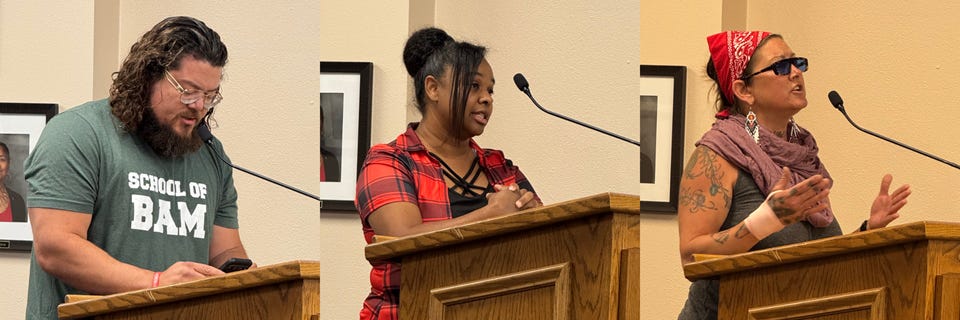
A woman identifying herself as Lashara commented, adding details about the incident at Luckie Park, including a claim that the officers drew pistols and assault rifles:
On April 3, parents and children ages two through 13 were playing at the park beautifully, at Luckie Park, enjoying each other's laughter and fellowship in the safety of the community. At approximately 12:30 this all changed, when five children, ages two, six, 11, 12 and 13, were ordered to get down on the ground, and they became surrounded by five police, including one officer from SMASH who specializes in gangs, drugs and firearms. Pistols and assault rifles were drawn. The children, not the adults, were surrounded. And it resulted in one 13-year-old autistic child being placed, handcuffed and searched for the pocket knife, that was not openly brandished. After the incident, the children needed several hours to calm down, tears to stop, and to receive comfort from their parents. But the fears and the anger of the parents could not be quieted.
Lashara recounted feelings of distrust and fear following the incident, saying "I'm unsure if it's policy that's broken, if it's culture that's broken, or if it's people that's broken, but I'm 100% sure that the trust is broken." She claimed she was speaking out so that "if there is another incident and a child does end up shot, our elected officials cannot claim ignorance [of] the issue [and] that this may have existed." The audience applauded her comment.
Kimber Hartley, the mother of T, spoke next, pleading for more effective and sympathetic accommodation of autism in children by SBCSD and other public agencies, reminding Council that this was Autism Awareness Month and citing a "one out of 31" figure as the proportion of kids with autism. She claimed that some of the officers who responded to the incident demonstrated lack of empathy for the challenges autistic kids and their parents face daily, arguing "we need to be inclusive."
The Radio Report and the Bodycam Footage
The initial statement from the PIO read:
On April 3, 2025, at 12:32 p.m., deputies from the Morongo Basin Station were dispatched to a call for service at Luckie Park. The caller said a male was wearing a mask, carrying a knife, and was walking through the park, hiding behind poles. There were several individuals at the park during this time. The male was seen walking slowly through groups of people and near the playground.
Deputies arrived at the park, located the male, and safely detained him. At no time were guns pointed at children. The male was found to be a juvenile and was in possession of the mask and a switchblade knife. The parent of the male was located, and she advised deputies that her son is a special needs child. The juvenile was released to the parent and the knife was confiscated. Deputies attempted to give information about the Blue Envelope program to the parent however she refused the information.
When Desert Trumpet met with Captain Warrick and Sergeant Scalise, we learned there were four deputies, Alvarado, Cordova, La Rocco and Cervantes responding to the incident and one corporal, Bengard, who arrived after the incident. The reporting call, which was made by a Welfare Enforcement Investigator over law enforcement radio, lasted five to seven minutes and conveyed a play-by-play of the “younger subject’s” movement in the park to responding deputies. We do not have copies of the call or the footage shown, therefore this account of the audio and bodycam footage is from notes and memory. Conversations are paraphrased. The intent is to focus on the what took place as sheriffs entered the park and into the 13-year-old’s immediate vicinity.
It’s difficult to tell from the videos where the different involved parties were located relative to each other in the park, but it did not appear that the most of the adults and the children were in direct proximity to each other when the incident unfolded. There seemed to be children in different areas of the grass and the play equipment with most of the adults gathered on a bench under a tree.
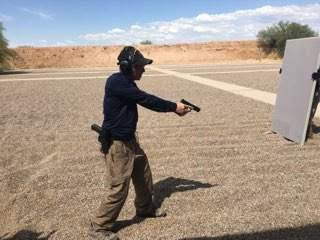
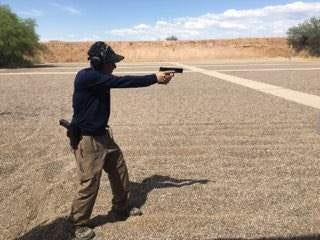
The videos from the incident and conversations with Sergeant Scalise confirm that Deputies Alvarado, La Rocco and Cervantes entered the park with firearms in a low ready position (that is, out of holster and pointing towards the ground at a 45 degree angle). Deputy Cordova, the member of the SMASH unit referred to above, had a long gun slung across his front in a low ready position. The firearms were not pointing in the direction of the subject or others in the park. Of course that doesn’t mean that the sight of deputies running into the park with firearms drawn wasn’t frightening to everyone present, including young children.
The bodycam video from Deputy Alvarado shows him heading toward the subject, who by this point has removed his mask and raised his hands. He is wearing a gray hoodie. Deputy Alvarado shouts for the person “in the gray hoodie” to get down. With the mask off, the subject is revealed for the first time to be an adolescent boy, T. Children are visible to the Alvarado’s right and left. As he repeats the command to get down while moving forward toward the 13-year-old, the children to either side can be seen dropping in place to the ground and laying flat — at least one is face up. At no point does the bodycam footage, which has multiple views of the scene, show deputies surrounding children on the ground or pointing firearms at anyone.
As Alvarado moves closer to T, who is kneeling, voices can be heard saying that he is autistic. Alvarado holsters his firearm and handcuffs T. The deputy’s demeanor is calm and his voice and manner indicate cognizance of the delicacy of the situation. Deputies La Rocco and Cervantes are also standing near the 13-year-old, La Rocca has holstered his firearm and is holding a taser, Cervantes has his firearm out but pointed down. Both are also calm. T is soft-spoken, timid and frightened.
There are one or two women nearby as Alvarado quickly searches the 13-year-old, who is asking what he did wrong. He appears to be close to tears. Alvarado asks where the knife is, and T responds. One of the women, Lashara from the City Council meeting, is explaining that the mask provides a safe space for T and that he often wears it. T indicates that the knife is necessary so he doesn’t die (his approximate words). Once the deputy has the knife, Lashara asks if the handcuffs can be removed, Alvarado complies, and T is released to sit on a bench with Lashara and another child, who is crying and very upset.
As Lashara comforts the two children, she tells the deputies that she can see the situation from their angle — that T is tall, that the deputies likely received a report of a person wearing a serial killer mask carrying a knife. T’s mother, Kimber, stands to one side and is highly agitated and verbally expressing her frustration at the deputies.
The knife is being described by some of the adults present as plastic and harmless — however, it’s unclear if all the adults were aware that T had a knife. Per Captain Warrick, the knife has a plastic handle but the blade is metal, and he described it as a switchblade — that is, a knife that opens with the touch of a button. Switchblades are illegal in California and their possession is a misdemeanor. However, T was not charged, he was released to his mother and the deputies did not return the knife to T or his mother.
Why Are the Witnesses’ Accounts so Different from the Footage?
There are obvious differences on key points, particularly on whether children were ordered to the ground and surrounded by the deputies with guns drawn. Did the adults witness this directly or were they relying on accounts from the children?
Also, while there are studies on the impact of stress and trauma on eyewitness accounts, the results are inconclusive.3
It’s unclear what role T’s autism played in the incident. One can surmise that it wouldn’t have taken place had T not been wearing a mask and carrying a knife, which he and Lashara described as coping mechanisms for his autism. However, T does comply with law enforcement, unlike other incidents that have had tragic outcomes due to alleged (or misperceived) aggressive behavior on the part of the neurodivergent teenagers involved.4
An article from the Marshall Project5, used the March 2024 shooting of autistic 15 year old Ryan Gainer by SBCSD deputies as a springboard for examining why interactions between neurodivergent people and police end in tragedy:
People with developmental disabilities like autism spectrum disorder (ASD) are, according to frequently cited government data, seven times more likely to encounter police than neurotypical people. That creates a lot of opportunities for tragic outcomes because there is a substantial overlap between the signs of ASD and behaviors that police are trained to view as suspicious. Some examples include avoiding eye contact, pacing or repeating words.
The San Bernardino County Sheriff's Department has implemented a program currently being used in other parts of California designed for people who become anxious around law enforcement or have other challenges which can complicate their interactions such as being neurodivergent. The Blue Envelope program6 is still too new to evaluate its effectiveness. It puts the responsibility on the civilian instead of law enforcement and does not address the need for training, updating protocols for responding to calls that may involve subjects with mental health challenges or budgeting for mental health professionals to be available to accompany law enforcement when needed.
What kept the incident at Luckie Park from becoming another tragedy was T. When he saw the deputy coming toward him with a drawn gun, he pulled off his mask and kept his hands visible. And credit to Lashara for quickly informing the deputies of T’s autism, and Deputy Alvarado who calmly worked with T.
Leave your thoughts in the comments below. Please note that we do not allow anonymous comments. Please be sure your first and last name is on your profile prior to commenting. Anonymous comments will be deleted.
Feel free to share this article!
We have reached our goal of $5,000 in paid subscriptions! We are very grateful for support from our community. We know that many communities in the Morongo Basin are economically disadvantaged, so our coverage will always be free. However, if you have the means to support our work, we always appreciate upgrades to a paid subscription. Your upgrade helps keep subscriptions free for those who cannot afford to donate.
Note: your subscription/donation will be listed as AHA Projects, the name of our fiscal receiver, on your statement.
Desert Trumpet has requested copies of the documentation we reviewed. However, due to the need to redact the faces of the children in the videos, we were told it could take weeks before we receive it. Many sheriff department records are public. They can be requested via SB County Public Records PortalNextRequest.
Our current policy is to not publish the names of minors. We are substituting an initial, T, unrelated to the boy’s name.
The effects of stress on eyewitness memory: A survey of memory experts and laypeople, National Library of Medicine, 2021
The most recent shooting took place on April 5, in Boise Idaho, in which an nonverbal autistic teen, holding a knife, stumbled towards police officers who shot several times, despite being on the opposite side of a chain link fence.
When Police Encounters With Autistic People Turn Fatal, The Marshall Project, March 16, 2024
Those who are interested in the Blue Envelope Program can visit the Inland Regional Center, located at 1365 S. Waterman Avenue, San Bernardino, Ca 92408. For additional information call (909) 890-3000 or visit www.inlandrc.org.



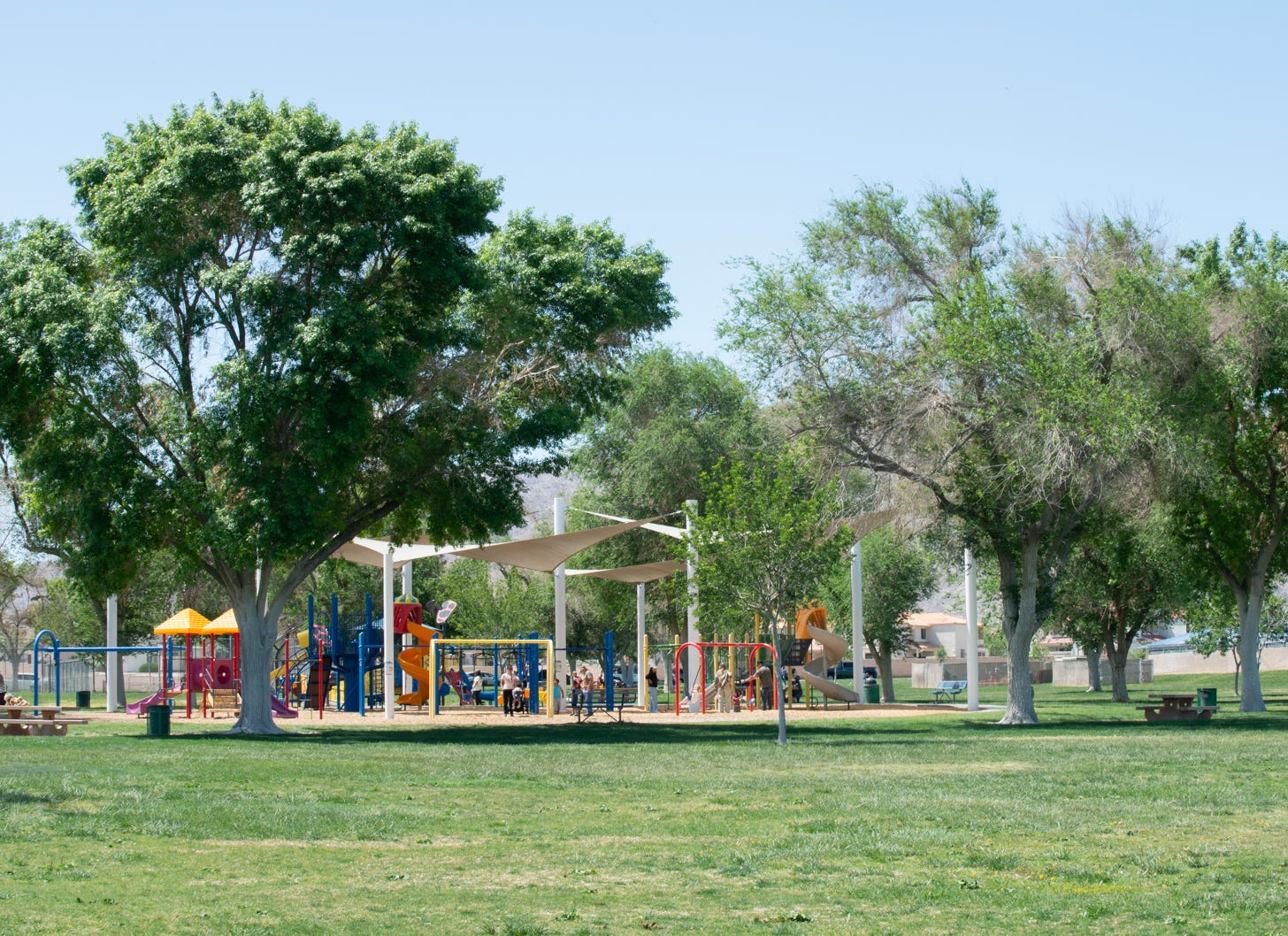
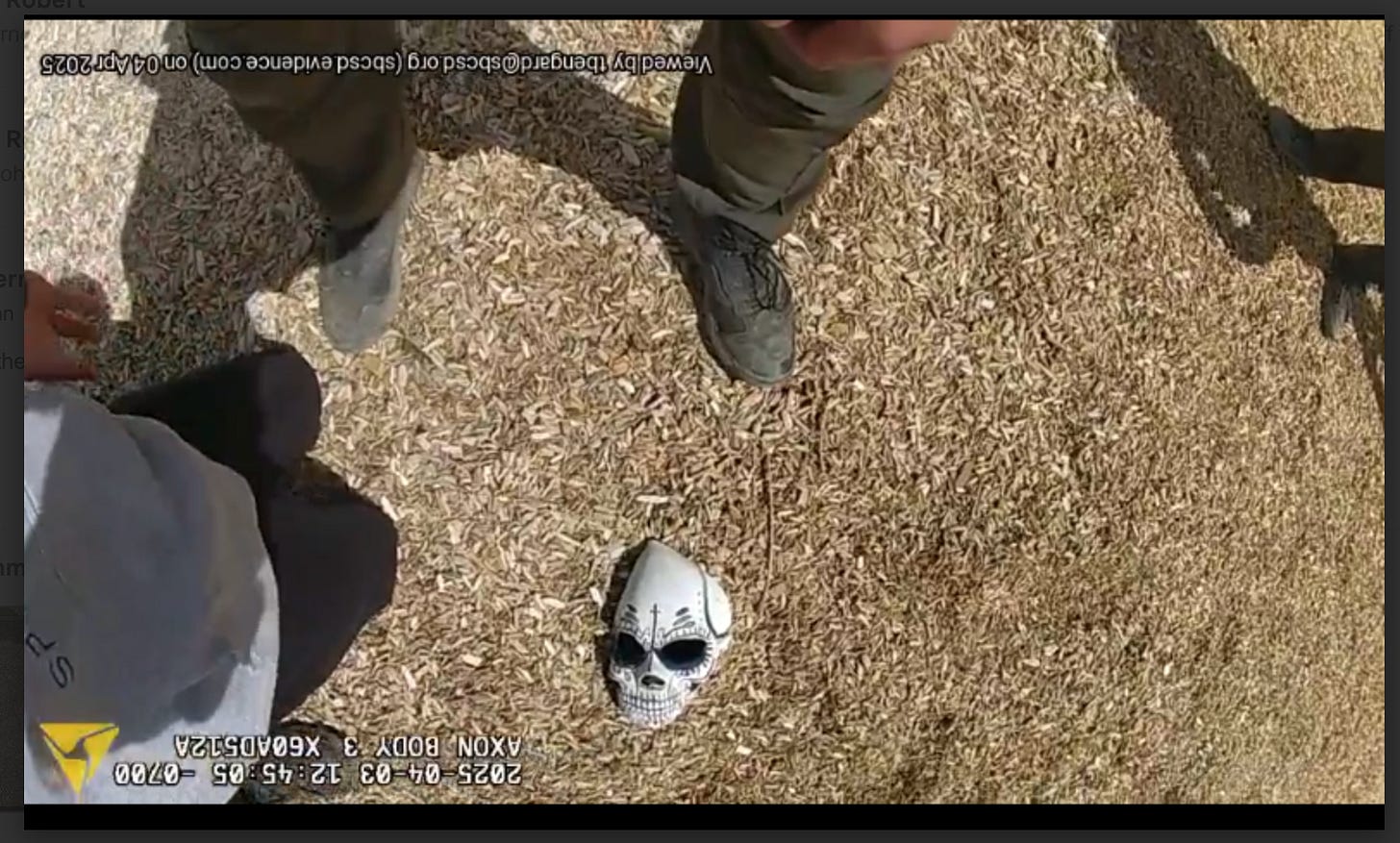
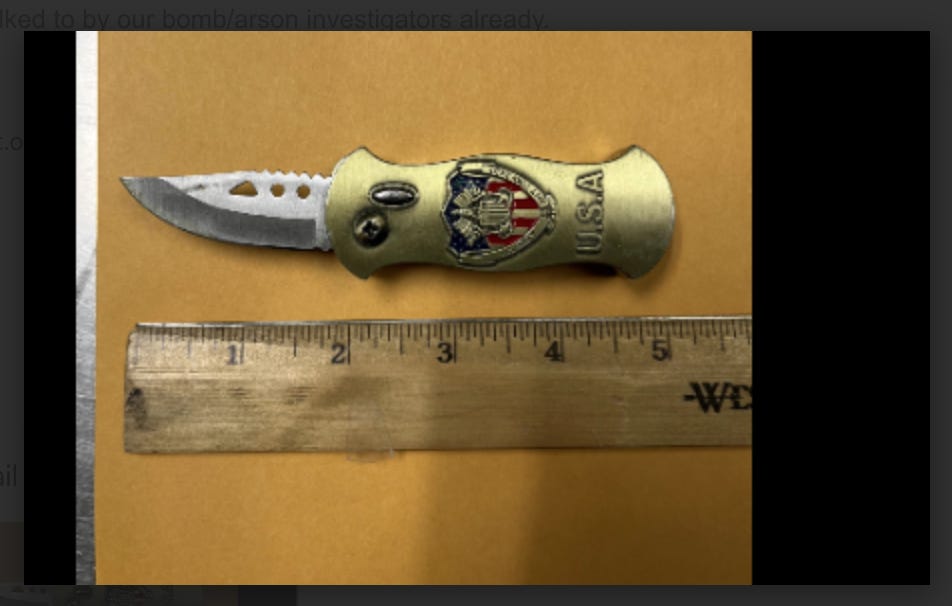
As a parent who was present at the park during this incident, I appreciate the coverage—but there are a few important points missing or misrepresented.
First, while the article notes that officers responded to a report of a “masked individual with a knife,” it doesn’t clarify that the knife was not visible or brandished at any point. Officers had to search the child and ask him where it was. None of the parents present—including myself—saw the child as a threat, and all of us had children playing nearby.
Second, while the article references the sheriff’s account and the existence of bodycam footage, it doesn’t appear that any of the parents who witnessed the incident were interviewed for their perspective. That’s disappointing, especially given the impact this had on our children—some of whom were ordered to the ground during the response.
Including firsthand accounts from the families on scene would have added meaningful context to the story and helped readers better understand the concerns about how this situation was handled.
The thing is the police are "damned if they do, damned if they don't" Glad the issue was resolved peacefully. The police, arriving had no idea what the actual situation was, they appear to have evaluated it quickly and no one was injured. Glad the bodycams were activated.